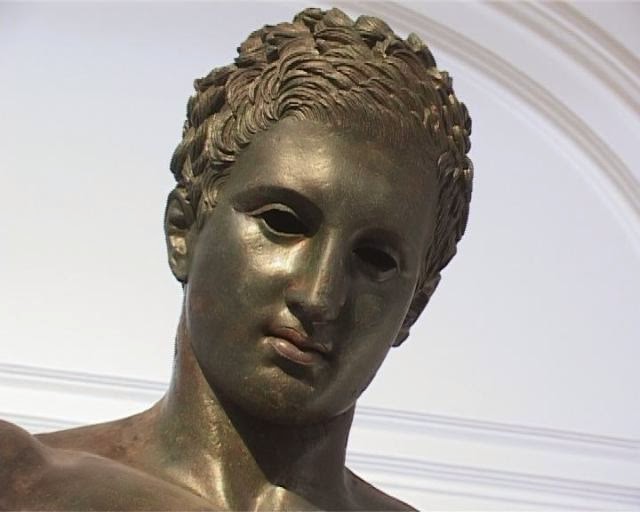After seven years of extremely extensive conservation and restoration operations, the ancient statue Apoxyomenos, known to the public since spring 1999, when it was raised from the seabed off the islet of Vele Orjule near Losinj in Croatia, is on display at the Mimara Museum in Zagreb.

The 192 cm tall bronze statue, covered with maritime incrustation, was found accidentally in 1996 on the seabed off Vele Orjule, an islet near the island of Lošinj, by a Belgian tourist.
In 1999 the Ministry of Culture of the Republic of Croatia organized the invaluable statue to be raised from the sea, enriching thus not only Croatian, but world cultural heritage as well.
The ensuing comprehensive conservation-restoration work carried out in the Croatian Conservation Institute in Zagreb included desalination, mechanical removal of maritime incrustation build-up during the statue's two millenia long rest on the seabed. An internal supporting construction was also made, thanks to which the long laying statue was put on his feet. Conservation-restoration and art historical studies of the statue were done by Croatian and Italian experts.
The statue archetype has been dated to the middle of the 4th century BC, the late classical or early Hellenistic period, but leaving for the possibility that our statue might be a later cast.

[Credit: WikiCommons]
On the basis of research carried out to date, it can be assumed that the statue was a cargo of a Roman ship and during some mighty storm it fell into the sea. How this precious cargo landed on the sea bottom, it will, however, remain a secret.
The Project “The Croatian Apoxyomenos“ was awarded The European Union Prize for Cultural Heritage / The Europa Nostra Award in 2007, in the category “Conservation of Art Works“.
The temporary exhibition of the Croatian Apoxyomenos at the Mimara Museum in Zagreb is a follow-up to previous succesfull exhibitions iz Zagreb, Florence (Italy), Osijek, Rijeka, Split, Zadar and Ljubljana (Slovenia), Paris-Louvre (France) before it is permanently placed in its own future museum in Mali Lošinj.
The following links detail the complete story of the discovery, recovery and restoration of the Croatian Apoxyomenos, with photographs.
- The Croatian Apoxyomenos on the Croatian Ministry of Culture website
- 3D Digitizing of Apoxyomenos by Topomatica
Source: Mimara Museum [April 19, 2014]